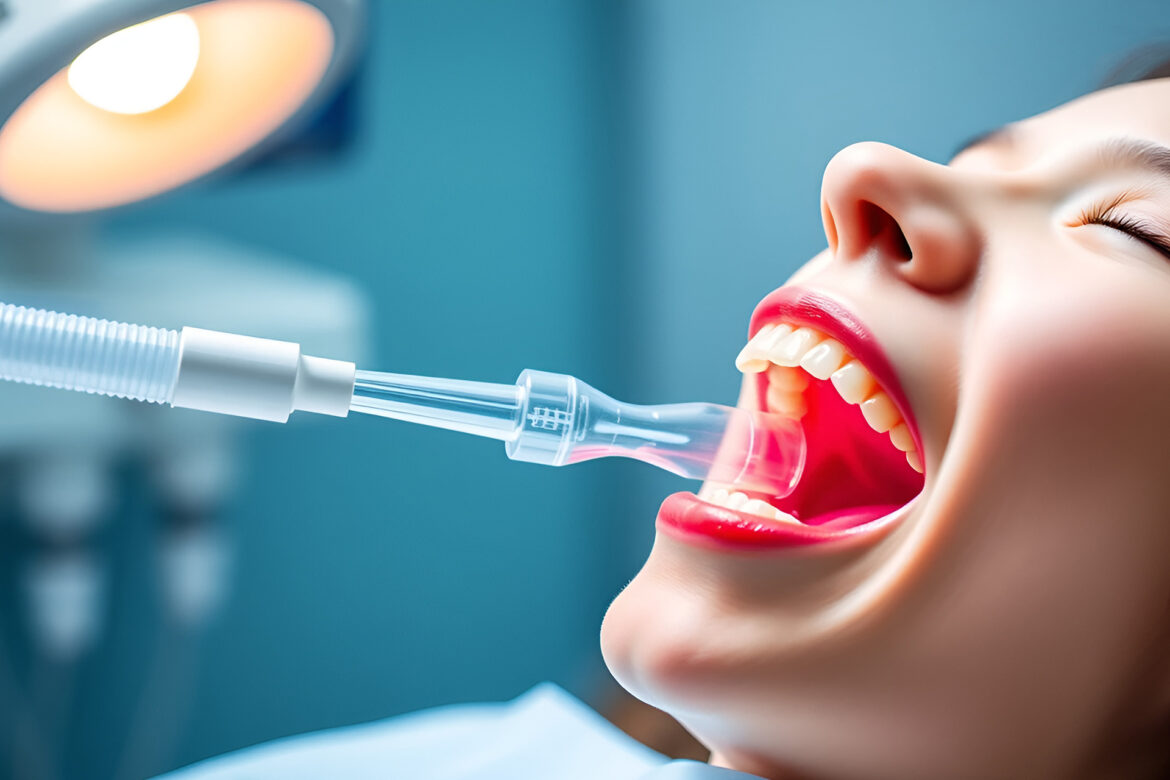Abstract
A 28-year-old man with muscular dystrophy was bedridden, requiring 24-hour respiratory support with a ventilator. Owing to repeated episodes of aspiration pneumonia, he was fed through a gastrostomy tube. Mouth opening was limited to 1.5 cm, and he received regular house-call dental treatments to maintain oral hygiene. Owing to excessive saliva production, the patient’s family performed oral suction every 10-15 min, which placed a significant burden on them. To alleviate this problem, we proposed the use of an oral appliance. We developed a continuous aspiration oral appliance using information obtained from an intraoral scanner and partial impression-taking. After implementing the device, the frequency of suctions decreased significantly, satisfying the patient and his family. Current advances in technology allow for the creation of oral appliances in many cases, including in-home care settings, benefiting older adults and individuals with severe disabilities who require aspiration prevention.
Introduction
Muscular dystrophy is classified as a genetically inherited degenerative disorder of muscle. Muscular dystrophy has clinical features of progressive muscle weakness and has a dystrophic pathological appearance on muscle biopsy [1]. Aspiration pneumonia is one of the leading causes of death in patients with muscular dystrophy. One of the most severe complications in patients with advanced Duchenne muscular dystrophy (DMD) and motor neuron disease is the progressive weakening of respiratory muscles, leading to respiratory failure. Almost all DMD patients eventually progress to ventilator dependence [3]. Oropharyngeal weakness eventually jeopardizes safe and adequate food intake, leading to the use of a gastric fistula tube owing to the risk of aspiration. These patients continue to be at high risk for pneumonia because of aspiration of oral secretions and the inability to generate optimal cough reflexes. Here, we present a case report on the use of a continuous saliva suction oral appliance (CSSOA) to prevent aspiration in a 28-year-old man with advanced muscular dystrophy requiring 24-hour respiratory support with a ventilator.
Case Presentation
Clinical application of a saliva suction system
In cases of muscular dystrophy, as a countermeasure for saliva aspiration, low-pressure continuous salivary suction using a suction tube is used. However, this method has some shortcomings, including accidental swallowing or ingestion of the suction tube by biting and difficulty holding the suction tube within the oral cavity. Therefore, this method may be difficult to use in patients who move excessively or overnight while the patients are asleep. Namiki et al. reported a device integrating a suction tube and a mouthpiece that was developed to solve these problems in patients with dysphagia [4]. This device was named the “CSSOA” and was developed to prevent saliva aspiration in older patients. The suction tube is detachable from the mouthpiece. The fabrication process of the CSSOA consists of the following three steps
Step 1: Fixation of the Metal Rod to the Working Model
An impression of the patient’s dentition is taken using dental alginate impression material, and a working model is created. To provide a groove for the suction tube in the mouthpiece, a 4-mm metal rod is fixed to the working model using dental wax.

